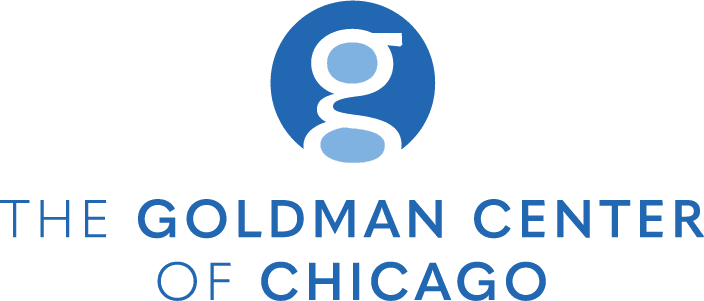Specific Learning Disorders (SLD) are a category of neurodevelopmental disorders that affect a child’s ability to acquire and use academic skills such as reading, writing, or mathematics. These difficulties are not due to lack of intelligence or poor educational opportunities but stem from differences in brain function. While each child’s experience with SLD may vary, early identification and targeted support can make a significant difference in their academic and social success.
In this guide, we’ll explore what Specific Learning Disorders are, the types of SLD, how they are diagnosed, and effective strategies for helping children thrive in their academic environments. Whether you’re a parent, teacher, or healthcare professional, this guide will provide the essential information you need to support children with SLD.
What Are Specific Learning Disorders?
Specific Learning Disorders are categorized by persistent difficulties in learning key academic skills. According to the DSM-5 (Diagnostic and Statistical Manual of Mental Disorders), SLD involves a discrepancy between a child’s intellectual ability and their academic performance. These challenges manifest despite appropriate educational support and opportunities.
Common Characteristics of SLD:
- Difficulty with reading, spelling, writing, or math that persists for at least six months despite targeted interventions.
- Academic performance that is significantly lower than peers of the same age.
- A slow rate of learning or trouble grasping basic concepts in specific academic areas.
- Frustration, anxiety, or lack of motivation linked to schoolwork.
While SLD may affect a child’s academic life, it’s important to note that it doesn’t reflect their intelligence or potential. Many children with SLD are bright and capable, and with the right support, they can succeed in school and beyond.
Types of Specific Learning Disorders
Specific Learning Disorders are typically divided into three primary categories based on the areas of academic difficulty:
1. Dyslexia (Reading Disorder)
Dyslexia is one of the most well-known learning disorders and affects a child’s ability to read and comprehend text. Children with dyslexia may struggle to:
- Recognize and decode words accurately.
- Understand the meaning of written text.
- Spell words correctly.
- Read fluently and quickly.
Common signs of dyslexia include:
- Difficulty identifying letters, sounds, or words.
- Confusing similar-looking letters (e.g., b, d, p).
- Trouble following along with stories or understanding sequences of events.
How to Help:
- Multisensory Instruction: Use teaching strategies that engage multiple senses, such as visual, auditory, and kinesthetic learning techniques.
- Phonics-Based Programs: Structured literacy programs that focus on phonemic awareness, word recognition, and fluency are highly effective.
- Reading Support Tools: Assistive technology like audiobooks, text-to-speech software, and reading guides can help children with dyslexia succeed in school.
2. Dysgraphia (Writing Disorder)
Dysgraphia impacts a child’s ability to write coherently and legibly. It affects not only handwriting but also spelling, sentence structure, and composition.
Common signs of dysgraphia include:
- Poor handwriting with inconsistent spacing and letter size.
- Difficulty organizing thoughts into written form.
- Frequent spelling mistakes and punctuation errors.
- Holding a pencil awkwardly or tiring quickly when writing.
How to Help:
- Fine Motor Skill Development: Encourage activities that strengthen fine motor skills, such as cutting with scissors or playing with modeling clay.
- Typing Skills: Learning to type can help children bypass handwriting difficulties and improve written communication.
- Graphic Organizers: Using visual aids to organize ideas before writing can support children in structuring essays and assignments.
3. Dyscalculia (Math Disorder)
Dyscalculia affects a child’s ability to understand and work with numbers. This disorder makes it difficult to grasp mathematical concepts, perform calculations, and apply math to everyday life.
Common signs of dyscalculia include:
- Struggling to understand the relationship between numbers and quantities.
- Difficulty with basic math operations (addition, subtraction, multiplication, division).
- Problems with number recognition or sequencing.
- Avoiding math-related tasks due to frustration or confusion.
How to Help:
- Visual Aids: Using manipulatives like counters, blocks, or number lines can help children better understand abstract math concepts.
- Math Games: Engage children in fun, interactive math games that reinforce basic skills and boost confidence.
- Repetition and Practice: Regular, short practice sessions that break down complex tasks into smaller, manageable steps can aid in mastering math skills.
Diagnosing Specific Learning Disorders
Early diagnosis of SLD is crucial for providing children with the support they need. Diagnosis typically involves a comprehensive evaluation by a team of professionals, including psychologists, educational specialists, and pediatricians.
Steps in the Diagnostic Process:
- Educational Assessment: Reviewing the child’s academic history and performance, including teacher reports and standardized test scores.
- Cognitive Testing: Assessing the child’s cognitive abilities, such as memory, attention, and problem-solving skills, to identify areas of strength and weakness.
- Observation and Interviews: Parents, teachers, and the child may be interviewed to gather insights into the specific challenges the child is facing.
- Diagnostic Criteria: The child’s difficulties must meet the DSM-5 criteria for SLD, including persistent struggles with academic skills that are not attributable to intellectual disabilities, sensory impairments, or other factors.
Supporting Children with Specific Learning Disorders
Once diagnosed, children with SLD can benefit from a range of support services designed to meet their individual needs. With the right interventions and accommodations, many children can thrive in school and lead successful, fulfilling lives.
Classroom Accommodations:
- Extended Time: Providing extra time for tests and assignments helps children manage their workload more effectively.
- Alternative Assessments: Allowing children to demonstrate their knowledge in different formats, such as oral presentations or projects, can reduce the pressure of traditional exams.
- Assistive Technology: Tools like speech-to-text software, calculators, and audiobooks can level the playing field for children with SLD.
Individualized Education Plans (IEPs) and 504 Plans:
In the U.S., children with SLD may be eligible for an Individualized Education Plan (IEP) or a 504 Plan under the Individuals with Disabilities Education Act (IDEA). These plans outline specific goals and accommodations to ensure the child receives appropriate support in school.
Parental and Teacher Support
Parents and teachers play a pivotal role in supporting children with Specific Learning Disorders. Open communication, collaboration, and a positive, encouraging attitude can help children develop the resilience and confidence they need to overcome academic challenges.
Parental Strategies:
- Stay Informed: Educate yourself about SLD and stay up to date on the latest research and strategies.
- Advocate for Your Child: Work closely with your child’s school to ensure they receive the accommodations and support they need.
- Celebrate Progress: Recognize your child’s strengths and celebrate small victories along the way.
Teacher Strategies:
- Differentiated Instruction: Tailoring lessons to the needs of diverse learners ensures all students have the opportunity to succeed.
- Patience and Flexibility: Recognize that children with SLD may require more time and alternative methods to grasp academic concepts.
- Encouragement and Positive Reinforcement: Boosting a child’s self-esteem through praise and positive feedback can help them stay motivated and engaged in learning.
Conclusion
Specific Learning Disorders can present significant challenges, but with the right interventions, children can overcome obstacles and reach their full potential. Early diagnosis, targeted support, and a collaborative approach between parents, teachers, and healthcare professionals are key to helping children with SLD thrive.
If you suspect your child may have a Specific Learning Disorder, don’t hesitate to seek a professional evaluation. With the right tools and resources, every child can succeed.






